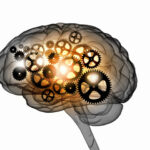What is OCD?
Obsessive-Compulsive Disorder (OCD), a type of anxiety disorder, is a potentially disabling illness that traps people in endless cycles of repetitive thoughts and behaviors. Obsessive-Compulsive Disorder is characterized by recurrent intense obsessions and/or compulsions that cause severe discomfort and interfere with day-to-day functioning. Obsessions are recurrent and persistent thoughts, impulses, or images that are unwanted and cause marked anxiety or distress. Compulsions are repetitive behaviors or rituals (like hand washing, hoarding, keeping things in order, checking things over and over, asking questions over and over again, etc.) or mental acts (like counting, or repeating words silently). Performing such rituals is not pleasurable. At best, it produces temporary relief from the anxiety created by obsessive thoughts. Most people who have Obsessive-Compulsive Disorder are aware that their obsessions and compulsions are irrational, yet they feel powerless to stop them. These can interfere with a person’s normal routine, schoolwork, job, family, or social activities. Several hours every day may be spent focusing on obsessive thoughts and performing seemingly senseless rituals. Children can suffer from Obsessive-Compulsive Disorder as well. Unlike adults, however, children with Obsessive-Compulsive Disorder do not realize that their obsessions and compulsions are excessive.
What are some of the symptoms of OCD?
Obsessive symptoms may include:
• Fear of dirt or contamination by germs
• Fear of causing harm to another
• Fear of making a mistake
• Excessive doubt and the need for constant reassurance
• Fear of being embarrassed or behaving in a socially unacceptable manner
• Fear of thinking evil or sinful thoughts
• The need for order, symmetry or exactness.
Compulsive symptoms may include:
• Repeatedly bathing, showering or washing hands
• Refusing to shake hands or touch doorknobs
• Repeatedly checking things, such as locks or stoves
• Constantly counting, mentally or aloud
• Constantly arranging things in a certain way
• Eating foods in a specific order
• Repeating specific words, phrases, or prayers
• Needing to perform tasks a certain number of times
• Collecting or hoarding items with no apparent value.
If people are obsessed with germs or dirt, they may develop a compulsion to wash their hands over and over again. If they develop an obsession with intruders, they may lock and relock their doors many times before going to bed (children may insist on sleeping with their parents, even between them for extra protection). People with Obsessive-Compulsive Disorder may also be preoccupied with order and symmetry, have difficulty throwing things out, so they accumulate, or hoard, unneeded items. Healthy people also have rituals, such as checking to see if the stove is off several times before leaving the house. The difference is that people with Obsessive-Compulsive Disorder perform their rituals even though doing so interferes with daily life and they find the repetition distressing. Symptoms may come and go, ease over time, or get worse. If Obsessive-Compulsive Disorder becomes severe, it can keep a person from working or carrying out normal responsibilities at home. People with Obsessive-Compulsive Disorder may try to help themselves by avoiding situations that trigger their obsessions, or they may use alcohol or drugs to calm themselves. If Obsessive-Compulsive Disorder is left untreated, it may start to interfere with all aspects of life.
What Causes OCD?
Studies have shown that a combination of biological and environmental factors may be involved. The brain is a very complex structure. It contains billions of nerve cells, called neurons, that must communicate and work together for the body to function normally. The neurons communicate via electrical signals. Special chemicals, called neurotransmitters, help move these electrical messages from neuron to neuron. Research has found a link between low levels of one neurotransmitter, called serotonin, and the development of Obsessive-Compulsive Disorder. In addition, there is evidence that a serotonin imbalance may be passed on from parents to children. This means the tendency to develop Obsessive-Compulsive Disorder may be inherited, although this doesn’t mean the child will definitely develop symptoms if a parent has the disorder. A child may also develop Obsessive-Compulsive Disorder with no previous family history. There are environmental stressors that can trigger Obsessive-Compulsive Disorder in people such as: abuse, changes in living situation, illness, death of a loved one, work- or school-related changes or problems, and also relationship concerns. Additionally, some studies also have found a link between a certain type of infection caused by the Streptococcus bacteria and Obsessive-Compulsive Disorder. This infection, if recurrent and untreated, may lead to the development of Obsessive-Compulsive Disorder and other disorders in children or adults.
How Common Is OCD?
Obsessive-Compulsive Disorder affects about 2.2 million American adults and about 1 million American children. This problem can be accompanied by eating disorders, other anxiety disorders, or depression. It strikes men and women in roughly equal numbers and usually appears in childhood, adolescence, or early adulthood. One-third of adults with Obsessive-Compulsive Disorder developed symptoms as children.
How Is OCD Treated?
Seeking help from a psychiatrist (or in children a child and adolescent psychiatrist) is important both to better understand the complex issues created by Obsessive-Compulsive Disorder as well as to get help. Most individuals with Obsessive-Compulsive Disorder can be treated effectively with a combination of psychotherapy (cognitive behavior therapy) and certain medications. These include: Tricyclic antidepressants (i.e. Anafranil), and selective serotonin reuptake inhibitor (SSRI) antidepressants, such as Celexa, Lexapro, Paxil, Prozac and Zoloft. Obsessive-Compulsive Disorder usually responds well to treatment with medications and/or exposure- based psychotherapy.
Exposure-based psychotherapy is when people are faced with situations that cause fear or anxiety and causes them to become less sensitive (desensitized) to them. The goal of these cognitive behavior therapies are to teach people with OCD to confront their fears and reduce anxiety without performing the ritual behaviors. Therapy also focuses on reducing the exaggerated or catastrophic thinking that often occurs in people with Obsessive-Compulsive Disorder. Family support and education are also central to the success of treatment. Antibiotic therapy may be useful in cases where Obsessive-Compulsive Disorder is linked to streptococcal infection. In very severe cases of Obsessive-Compulsive Disorder and in people who do not respond to medical and behavioral therapy, electroconvulsive therapy (ECT) or psychosurgery may be used to treat Obsessive-Compulsive Disorder. During ECT, electrodes are attached to the patient’s head, and a series of electric shocks are delivered to the brain, which induce seizures. The seizures then cause the release of neurotransmitters in the brain. Obsessive-Compulsive Disorder will not go away by itself, so it is important to seek some kind of treatment.




